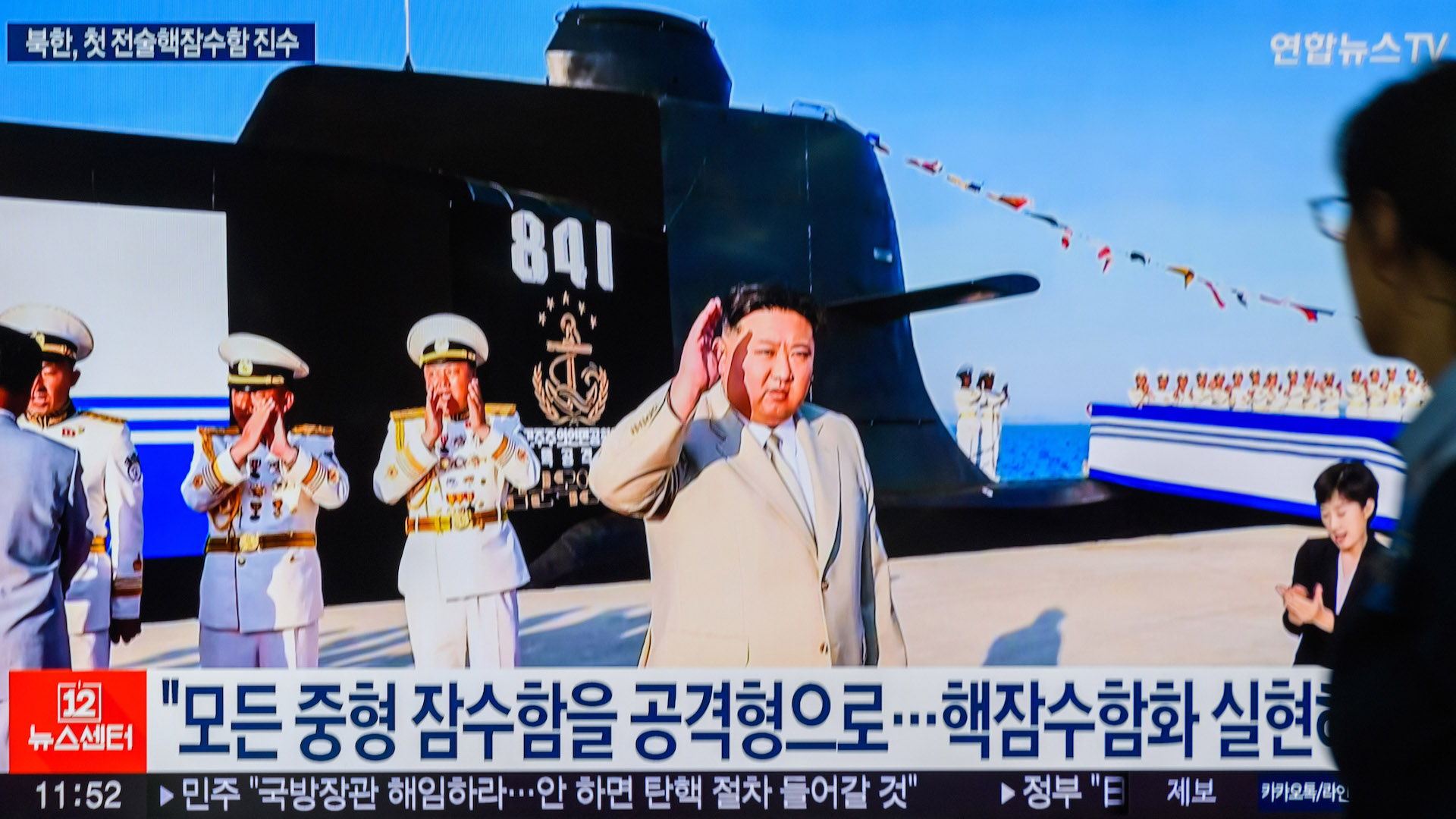North Korea appears to have started building a new submarine, which may feature nuclear propulsion, according to a South Korean official. The development would be in line with previous reports and follows the launch, last September, of a reworked Cold War-era Romeo class diesel-electric submarine designed to carry ballistic missiles. You can read more about that ‘Frankensub’ project here.
“Partial signs that appear to be the start of the submarine’s construction have been detected,” South Korea’s Defense Intelligence Agency said in a report to Representative Kang Dae-sik of the ruling People Power Party.
“As construction is still in its early stages, further confirmation is needed on whether it is nuclear powered,” the report said.

An unnamed South Korean military official told the country’s Yonhap News Agency that construction work on the submarine had been identified in the northeastern Sinpo area — presumably at the Pongdae Submarine Factory — and that the boat was bigger than previous ones fielded by North Korea.
“Its exact tonnage and other [details] can be accurately determined once progress is made,” the same official said.
The South Korean military’s assessment that the new submarine could be nuclear-powered seems to be based on its size, with no publicly available evidence at this point that North Korea has developed a suitable nuclear reactor for such a boat.
However, there have been statements from the leadership in Pyongyang that a nuclear-powered submarine is planned.
At the Party Congress in January 2021, North Korean leader Kim Jong Un announced that “the design of a new nuclear-powered submarine was researched and was in the stage of final examination.” Kim added that design work on various weapons and sensors for such a design had already been completed.

A future North Korean nuclear-powered submarine was mentioned by the country’s state media after Kim presided over the launch ceremony for the diesel-electric submarine named Hero Kim Kun Ok (hull number 841) that took place at Sinpo on September 6, 2023.

There were also reports from earlier this year that work on such a boat might already be underway.
In January, Kim is said to have inspected a nuclear-powered submarine under construction, as well as watching a “strategic cruise missile” test. These events were reported by Pyongyang’s state media, but no photos or further details of the new submarine were released. Again, Sinpo was identified as the likely location of the construction work.
Kim was said to have received “a detailed understanding of the nuclear submarine construction” as well as providing instructions about “issues” related to it.
It should be noted that, despite these reports, the choice of nuclear propulsion for North Korea’s next submarine remains unconfirmed and there has been skepticism in the past whether such ambitions are even realistic. Historically, submarine reactors have been particularly complex to master, given the demanding integration and power-generation requirements.
The ability of North Korea to build a nuclear-powered submarine is certainly questionable, although the country’s increasingly close relations with Russia since the start of the full-scale invasion of Ukraine could well have provided Pyongyang with technologies and expertise that would help achieve this. Since the start of North Korea’s military support for Russia in the war in Ukraine, TWZ has raised the possibility of reciprocal assistance from Moscow, which could well focus on nuclear and advanced missile technologies. Help in building a new submarine might also be an option.
If the Hero Kim Kun Ok reflects the current state of the art of North Korea’s submarine-building capabilities, then a nuclear-powered design does indeed look a long way off, although it’s not impossible.
The Hero Kim Kun Ok is essentially a very deep rework of a Soviet-designed Romeo class diesel-electric submarine with a new capability for submarine-launched ballistic missiles (SLBMs), thanks to a grafted-on missile compartment behind the sail. As well as SLBMs, the submarine appears to be able to launch cruise missiles, or perhaps SLBMs of two different sizes (offering differing ranges and payloads).
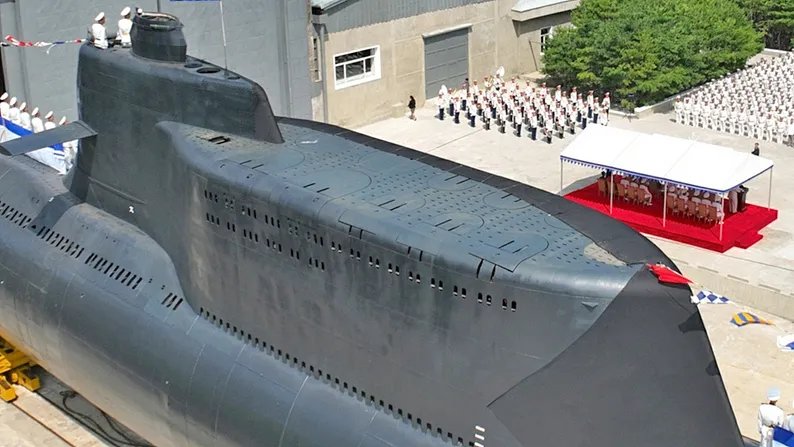
Despite its bizarre appearance, the non-nuclear Hero Kim Kun Ok reinforces the fact that North Korea is busy trying to build a second-strike nuclear deterrent in the form of SLBMs and submarine-launched cruise missiles (SLCMs).
The ‘Frankensub’ is far from ideal, however, as we have discussed before. If it becomes operational, it will be very noisy and easily tracked once on patrol. Furthermore, with only one or two boats capable of nuclear deterrent patrols, the North Korean nuclear second-strike deterrent is not the most credible. A nuclear-powered boat would offer huge benefits here, including essentially unlimited underwear endurance and potentially reduced acoustic signature, among others.
Pyongyang’s previous efforts to field SLBMs onboard operational submarines have achieved only limited success. The lone example of the Gorae class is also based on a significantly modified Romeo class attack sub.
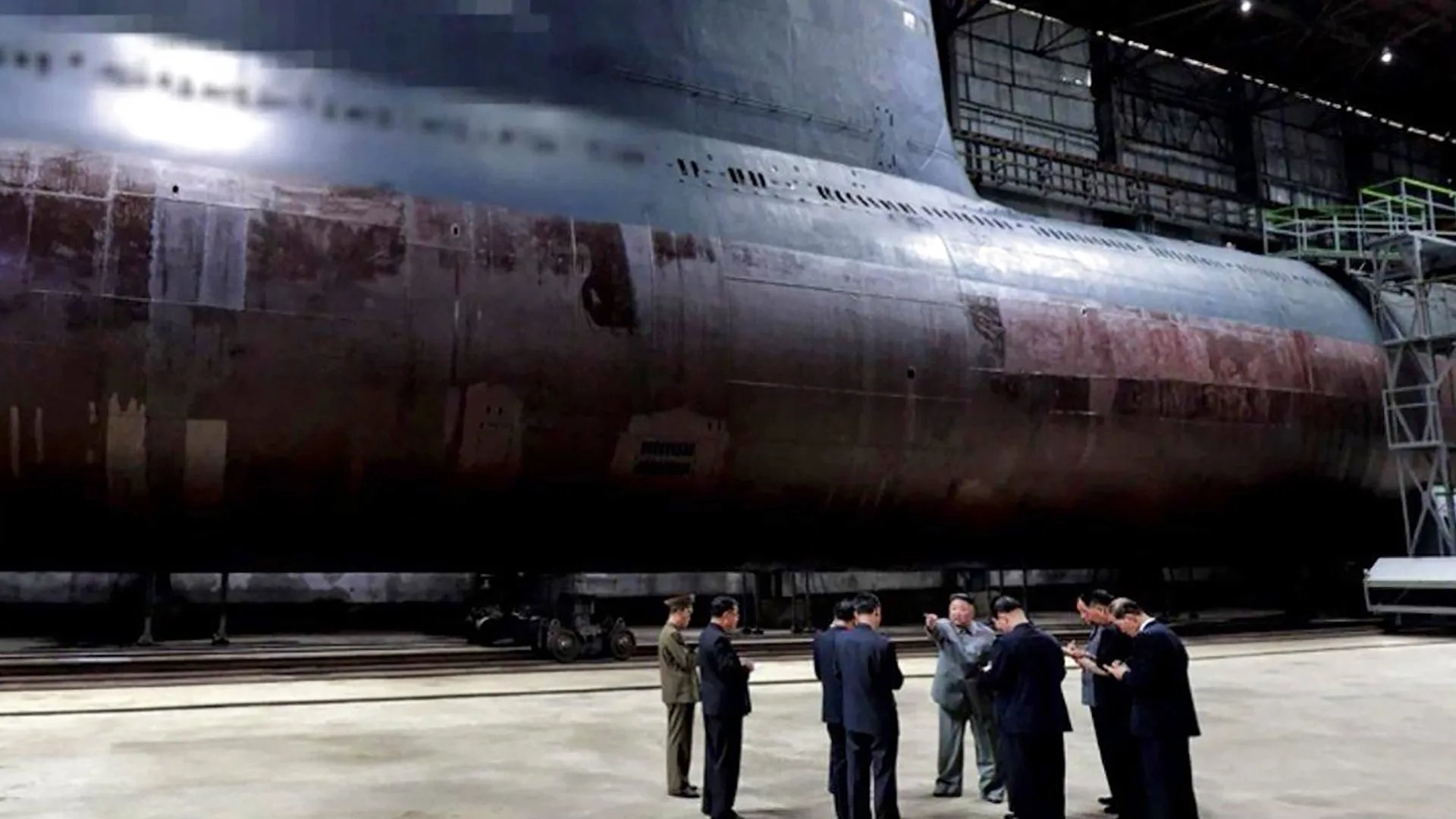
That being said, the development of these submarines is still significant for North Korea, and building a new and larger submarine design — nuclear-powered or otherwise — would be the logical next step.
It’s worth noting that Pyongyang has also struggled with fielding a workable SLBM, hampered to a significant degree by the lack of a genuinely suitable submarine to launch it from. At the same time, North Korea has developed increasingly large SLBMs, without any obvious submarine hull big enough to accommodate them. That, too, points to the development of a new and larger submarine design.
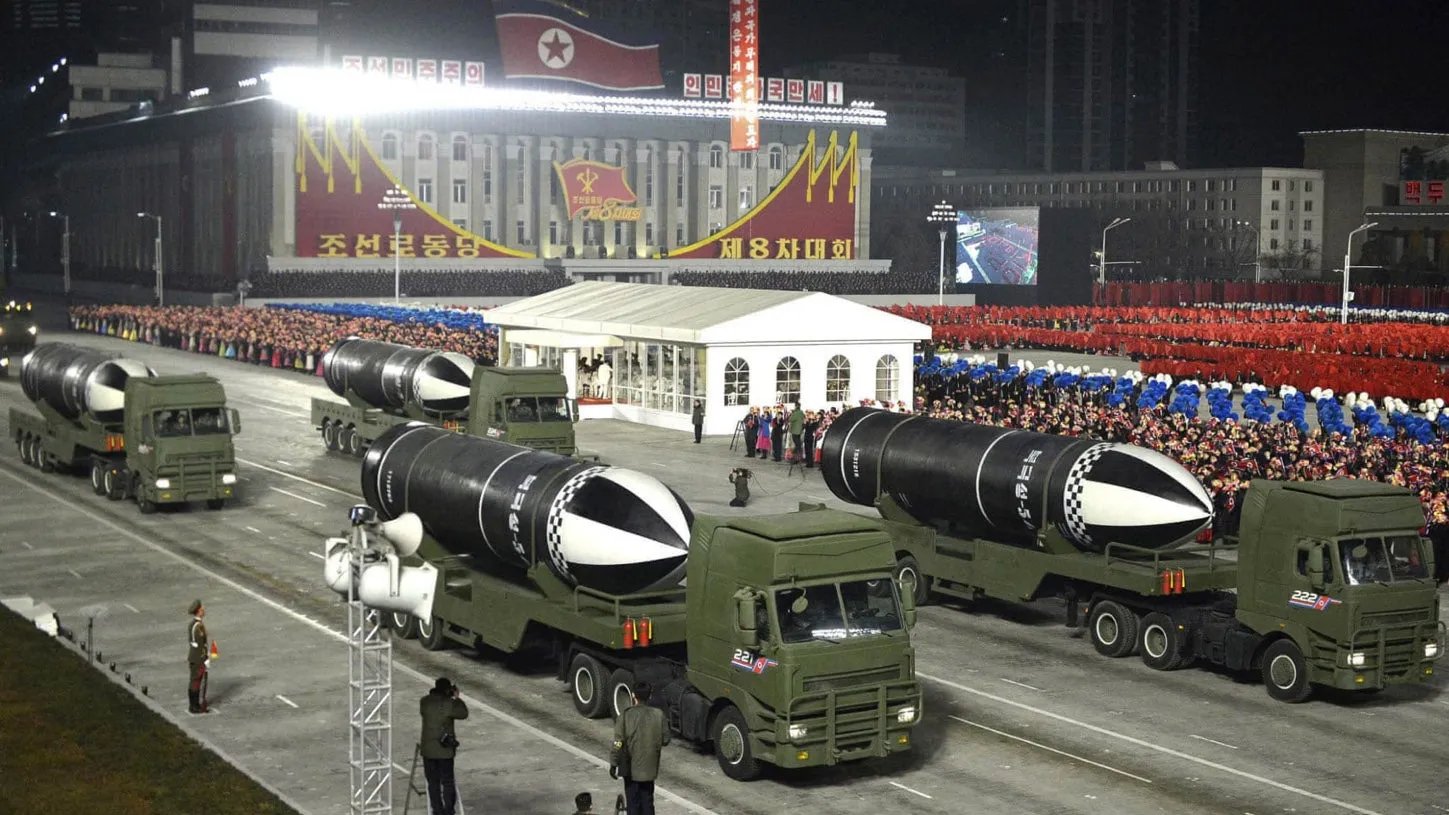
Presuming the new submarine is nuclear-powered, it’s possible that it could also be intended as a hunter-killer attack submarine, although North Korea’s emphasis on offensive missile capabilities would seem to make this much less likely.
On the other hand, it could also be a testbed for new technologies, which would be especially useful if North Korea has actually developed a suitable reactor, or plans to, perhaps with Russian assistance.
Speaking to TWZ, Alex Luck, an analyst who closely follows submarine developments, especially in the Indo-Pacific region, said that a nuclear-powered design would not be unexpected, based on previous official statements. However, “the technical challenges would still seem daunting, assuming North Korea isn’t receiving assistance from elsewhere.”
Luck said he hasn’t seen any detailed reports assessing that North Korea has developed a suitable reactor design, but also raises the possibility that the new submarine isn’t a “classic nuclear-powered” boat, but perhaps some sort of hybrid. This could be a conventionally powered submarine with an auxiliary or experimental nuclear reactor, similar to how some reports describe the mysterious new (and unrelated) Chinese Type 041, or Zhou class submarine.

Interestingly, Luck also identifies a new assembly hall at Sinpo adjacent to the one in which the modified Romeo design was completed last year, which could also point to the new submarine design being built here.
Luck also notes that it’s possible the ‘new’ submarine is actually another modified Romeo, which would seem operationally logical considering last year’s launch, although wouldn’t really explain the apparent size discrepancy.

That explanation would, however, fit with Kim’s statement at the launch of the Hero Kim Kun Ok, during which he spoke of a “plan to remodel existing medium-sized submarines into offensive ones loaded with tactical nuclear weapons to play an important role in modern warfare,” as part of what he described as a “low-cost ultra-modernization strategy.”
Overall, North Korea’s submarine force still dominates that of the South in terms of numbers, with as many as 86 boats, although this total includes midget submarines. South Korea operates around 21 submarines, although it’s also notably developing an SLBM capability for its latest diesel-electric boats. For now, South Korea is busily working on conventionally armed SLBMs, but there are growing suggestions that it might also look to introduce a nuclear capability in the future. This comes against the backdrop of worsening relations on the peninsula overall and an expanding dialogue between South Korea and the United States in terms of joint nuclear-planning exercises.
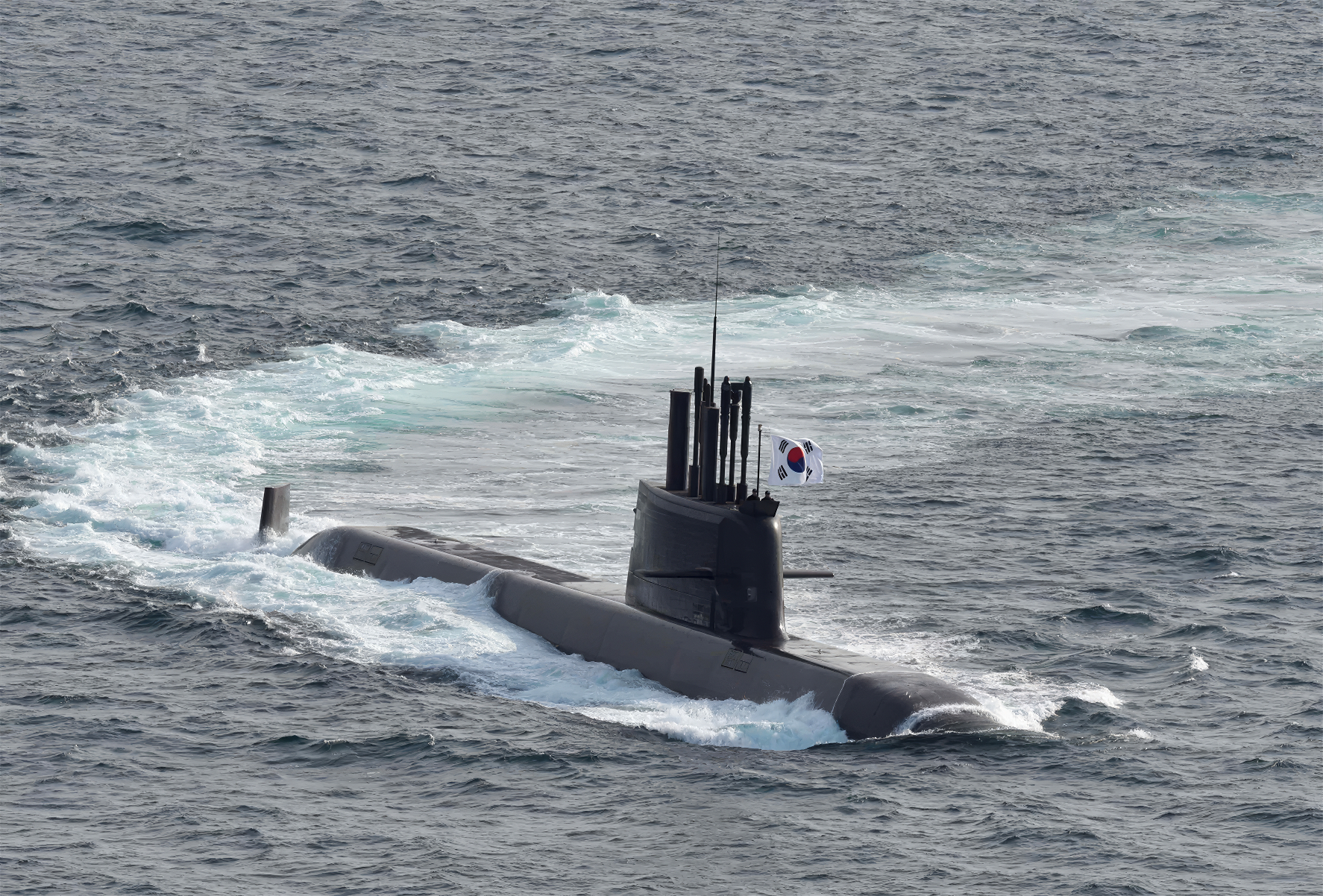
Until we see some imagery or other technical detail, it’s too early to make any definitive conclusions, although there’s little doubt that submarines — and especially ones able to provide a second-strike deterrent capability — are a priority for North Korea.
Contact the author: thomas@thewarzone.com
